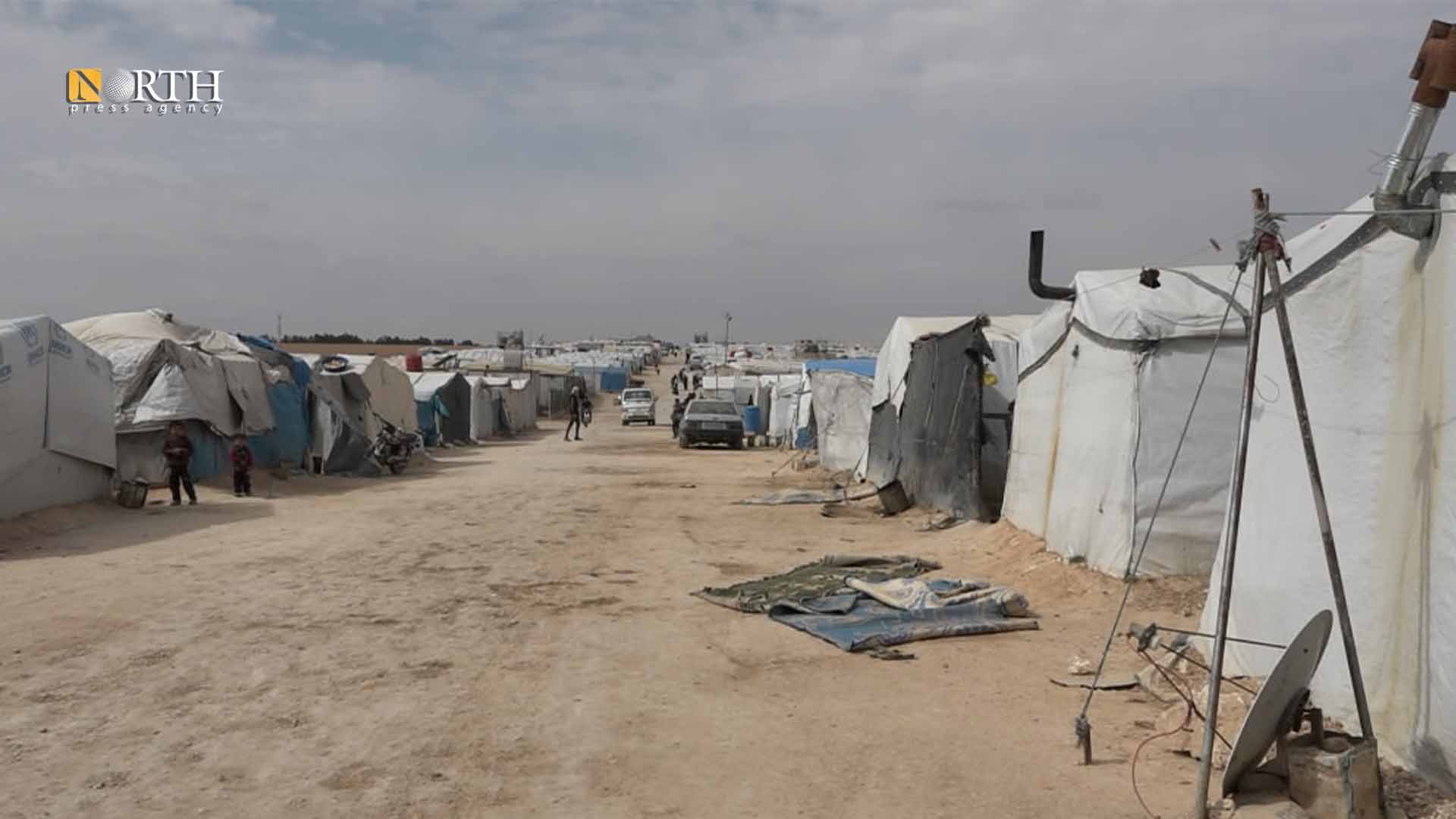MANBIJ, Syria (North Press) – Walida al-Ahmad, 45, an IDP lives in the new Eastern Manbij camp in northern Syria, is sewing the ripped tent she is sheltering in with some extra piece of cloth and nylon bags she collected.
Al-Ahmad displaced from Maskanah town in Aleppo eastern countryside and has been living in the new Eastern Manbij Camp for five years in this particular tent that became too old.
Al-Ahmad and her six-member family are forced to live there though the tent, like many others in the camp, has become ripped.
We are only provided plastic insulators to be placed on top of the tent, al-Ahmad told North Press.
The majority of the IDPs sew the tents with pieces of cloth and plastic materials to fill the holes. They also collect dust and put it around the tent to prevent the flow of rain water inside, al-Ahmad said.
Five years passed, still IDPs in the old and the new Eastern Manbij Camp live in the same tent. Hardly ever, the tents are replaced by new ones if they were exposed to rain or heat for too long and are no more suitable to be used.
“The tents do not protect us from the seething heat in summer nor the freezing cold in winter. The ground has turned to be homes of rats and mice,” al-Ahmad added.
The woman, busy filling holes of rats, said she is too concerned her children would be affected by plague. “We cannot prevent the spread of rats nor get rid of them,” she noted.
In March 2018, the new Eastern Manbij Camp was set up a year after the old one was established. The village of Rasm al-Akhdar separates between the two.
The new Eastern Manbij Camp shelters 650 families while the old camp shelters 425 families.
The majority of the IDPs in the two camps have displaced from Maskanah and Deir Hafer in the eastern countryside of Aleppo following the control of the Syrian government forces on their hometowns in 2017.
Al-Ahmad pointed out that the humanitarian organizations and the civil administration of Manbij hold responsibilities to find solutions for the issue of the ripped tents. “It would be better, especially for the children and the elderly, if the tents are replaced with prefabricated rooms.”
Muhammad Imad, 40, an IDP of Aleppo countryside, said the tents they are living in remain intact for just one year, then they get ripped and unsuitable for living anymore.
Imad agrees with al-Ahmad as saying the tents should be replaced with prefabricated rooms because it has become an urgent need.
“We have called the NGOs and the Autonomous Administration of North and East Syria (AANES) for two years to replace our tents with prefabricated rooms but our demands fell on deaf ears,” he said.
The camp’s management occasionally replaces the totally ripped tents with new ones and renovate other tents with plastic insulators which some IDPs said are extra and in vain expenses.
Imam Mustafa, a manager in the old Eastern Manbij Camp said they proposed a project to the civil organizations functioning in the two camps to construct prefabricated rooms.
In a voice record to North Press, Mustafa said “providing prefabricated rooms for all the IDPs is too much expensive. The camp’s management cannot bear such a cost on its own.”

